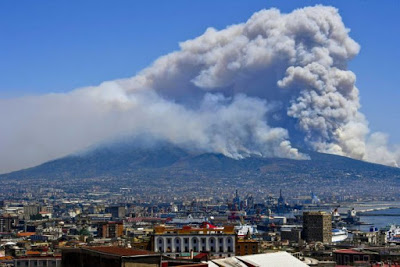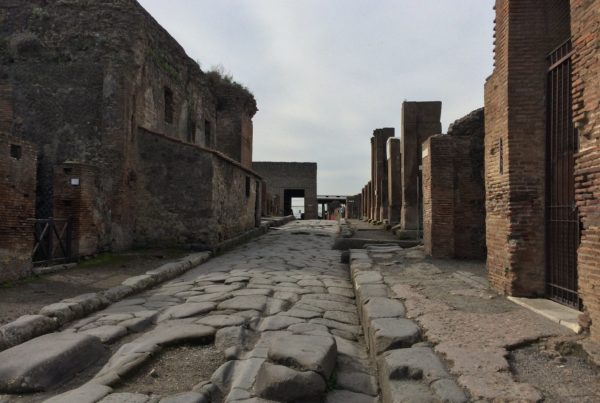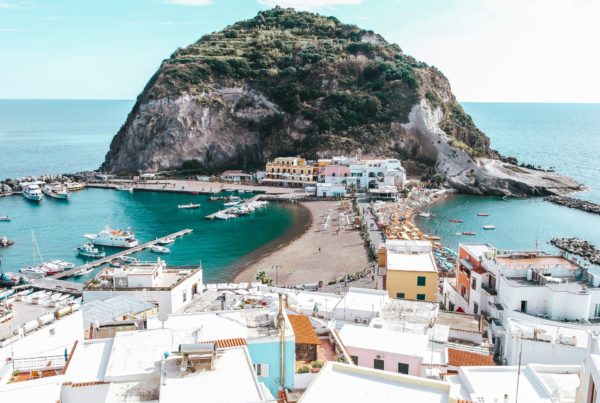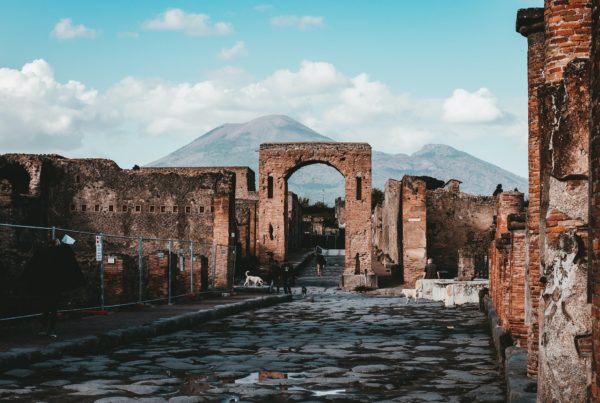 |
| Mount Vesuvius |
On Italy’s west coast sits the imposing Mount Vesuvius, the European mainland’s singular active volcano. Part of the Campania volcanic arc, this perilous peak has a 20-year eruption cycle meaning that it is well overdue to erupt as its last major outburst occurred in 1944. The mountain originated less than 200,000 years ago and has had 8 major eruptions during its erratic lifespan. Its unpredictable nature and its proximity to Naples and bustling communities have made it one of the deadliest volcanoes in the world.
In 2004, the Italian government offered monetary sums to persuade the locals of the area, particularly in the area of San Sebastiano, a village on the base of the volcano to move to a safer area. The town was all too familiar of the destruction that was caused by this catastrophic volcano as they had suffered through the 1944 eruption which had destroyed their entire town. Many locals refused the offer to relocate however and continue to reside in the town.
Notable eruptions of Vesuvius
Perhaps the most well known of its eruptions was in 79AD which resulted in the destruction and the abandonment of the ancient mega city of Pompeii. This eruption caused carnage to surrounding towns such as Herculaneum and Oplontis.The many ruins of Pompeii are viewed today by over 2 million visitors yearly.
The year of 1631 also provided one of the worse eruptions from the volcano that resulted in the death of 3,000 people. The pyroclastic flows which are a prime feature of a stratovolcano such as Vesuvius meant that the hot lava and ash flew down from the cone of the mountain at a ferocious speed, leaving the entire area shrouded in darkness.
Towards the end of the second World War, in an ironic and cruel twist of fate, Vesuvius erupted once again causing yet more destruction amidst the chaos that humankind had found themselves already in the middle of. This added more difficulty to the allied forces who had based themselves there and now had to manage the relocation of the 12,000 civilians who lost their home to the deadly lava that burned everything in its path. Many believed at the time that this was the end of the vicious cycle that had begun in 1944 however Mt. Vesuvius is far from finished.
Is the mountain still dangerous?
As the volcano continues to be active and overdue for its next major eruption, there is definitely an element of danger involved in living in proximity to the summit. Notably, the large populous of Naples is a short 12 kilometres away, which makes any research on the sporadic patterns of Vesuvius to be incredibly important. There have been hundreds of minor earthquakes that are on record, yet volcanologists and geologists are anticipating that it will erupt once more.
Categorised as a stratovolcano, the label means that there is a continuous effort and much time spent on trying to predict at least two weeks in advance when the next eruption will happen. This time frame given is due to the fact that it is estimated that it would take two weeks to evacuate the more than 600,000 residents that live in the ‘red-zone’.
Be sure to check out our Pompeii & Mount Vesuvius Tour today!






